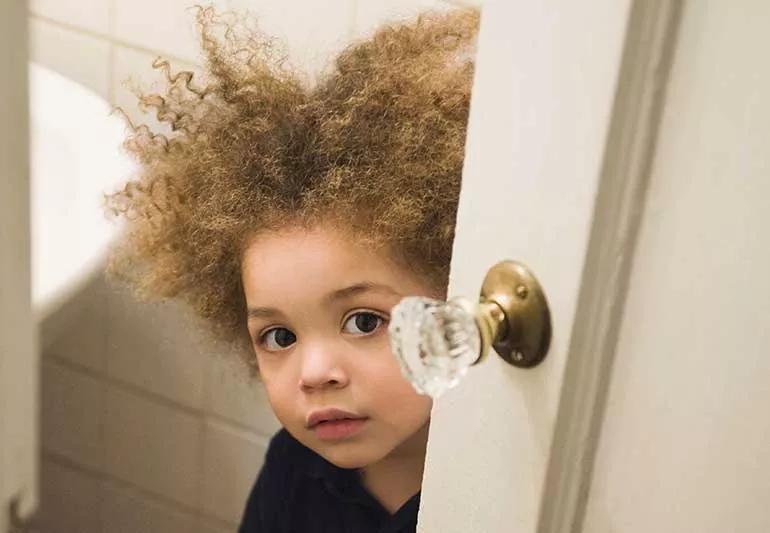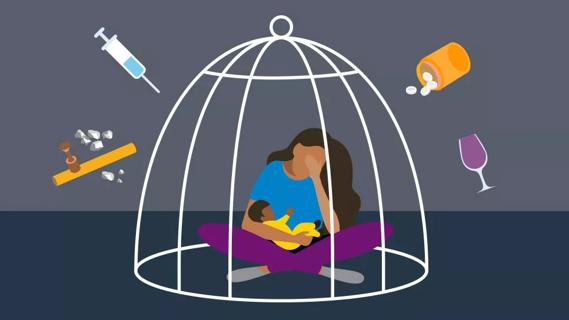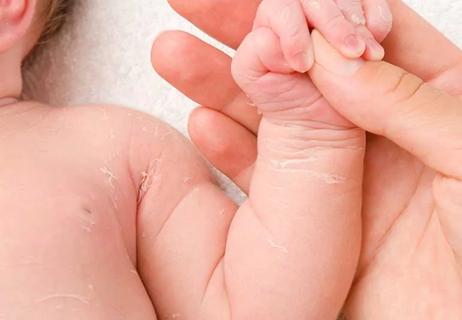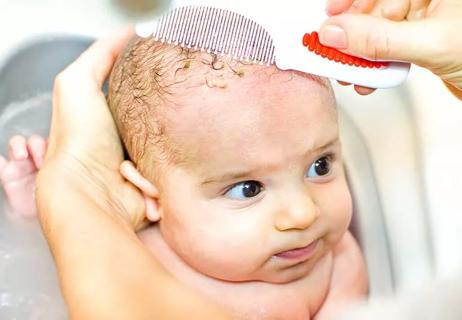Dietary and behavioral changes can help get things moving again

If you just finished potty training your kid, congratulations! That’s a big deal. But before you celebrate too much, know this: Your little one might not use the skill as much as they should at first.
Advertisement
Cleveland Clinic is a non-profit academic medical center. Advertising on our site helps support our mission. We do not endorse non-Cleveland Clinic products or services. Policy
On average, 1 in 5 toddlers is dealing with a case of constipation — and many of those no-go situations come during or just after potty training. It’s a #2 issue that can quickly turn into a #1 concern.
That plugged-up problem also can be a frequent issue for babies and kiddos entering the school-age years, too.
So, what can you do to get things moving in the right direction for your little one? Let’s get some answers from pediatric gastroenterologists Ben Freiberg, MD, and Mohammad Nasser Kabbany, MD.
When kids get plugged up, it’s typically a case of “functional constipation.” Basically, that’s an internal poop backup that can be traced to a combination of diet, personal decisions and lifestyle factors.
Four transitional stages of early childhood often come with constipation, explains Dr. Freiberg. They are:
Advertisement
And once constipation starts, the problem typically only builds. Waiting makes stool get harder and more difficult to pass. The harder and more uncomfortable it gets, the more kids really fight the urge to go. “It becomes a vicious cycle,” explains Dr. Kabbany.
Constipation in children also can be related to an underlying medical issue or prescribed medications, note Dr. Freiberg and Dr. Kabbany. Talk to your child’s pediatrician if you notice symptoms such as:
Everybody’s bowels are different when it comes to a pooping schedule. Some kids may need to go multiple times a day. Others may poop once every few days. Bottom line? There’s no single right number.
But in general, constipation may be an issue with your kiddo if they’re only going a couple of times a week or less, says Dr. Kabbany.
Other telltale signs of constipation include:
So, what can you do if your kid has constipation? Try these tips to help your child go from having rock-hard to soft, painless stool:
What your child eats can go a long way toward keeping their digestive system operating at peak efficiency. “We really do rely on getting plenty of fiber in our diet to keep things moving along,” says Dr. Freiberg.
That means filling plates with items such as whole-grain bread, berries and broccoli. (Need more menu ideas? Check out this list of 31 high-fiber foods.)
Boost fiber levels gradually, though, as too much fiber can cause bloating and discomfort.
In addition, make sure your child is drinking enough fluids. Water is always a good choice. Sorbitol-containing juices like prune and apple juice also can keep the lower pipes flowing.
Cutting back on milk and cheese may be beneficial, too, as dairy products can block things up.
It’s often said that timing is everything, right? Bring that theory to the bathroom by having your child sit on the toilet for five to 10 minutes after meals.
“This takes advantage of the natural reflex triggered by eating,” explains Dr. Kabbany. “They don’t have to strain. They can sit there and play on a tablet or read. But eventually, that reflex will kick in and they’ll go.”
Advertisement
But don’t let them sit too long, as hemorrhoids can become an issue.
Positioning on the toilet is important for pooping, and little legs that dangle down don’t help the process. A footstep can offer some foundational support to help your child poop more effectively, suggests Dr. Kabbany.
If you notice your kid doing that “gotta-go” dance, make sure they get to a potty ASAP. “Encourage kids to listen to their bodies and go when they get the urge to go,” says Dr. Freiberg.
Sometimes, a reward system like a sticker chart can motivate children and resolve constipation, says Dr. Kabbany. “But whether they poop or not, just sitting on the toilet should be praised.”
For many kids, medication is part of the solution for constipation — especially early on.
Oral laxatives often can help get kids unplugged. Once things are moving again, some children may benefit from medications such as polyethylene glycol, which pulls water into the intestines to soften stool, notes Dr. Kabbany.
Consult with your pediatrician on what medication to use and recommended doses, or on whether an enema could be beneficial.
For starters, keep encouraging the diet and behavioral tips mentioned above. “It takes time to build good habits,” says Dr. Freiberg.
Advertisement
And although it’s probably the last thing you want to add to your parenting to-do list, keep tabs on what’s happening behind the bathroom door if your child has struggled with constipation. Ask them how hard or soft their poop felt coming out. (Or go in and take a quick peek if you can.)
Don’t ignore problems either. Constipation can be difficult to undo if left alone. Studies show more treatment success with intervention within the first three months.
And above all else, be patient. “Typically, children learn to withhold over a long time, and it takes time to retrain their bodies,” explains Dr. Kabbany. “Try not to get frustrated if they relapse.”
Advertisement
Learn more about our editorial process.
Advertisement

Gripe water isn’t regulated by the FDA, and research doesn’t support its use

Jaundice that’s present at birth or lasts more than a week should be evaluated by a pediatrician

When tight neck muscles give your newborn a head tilt, these gentle exercises can go a long way

Crossed eyes in a newborn are fairly common, typically harmless and usually go away

Neonatal opioid withdrawal syndrome, or NOWS, can develop when a fetus is exposed to opioids, nonmedical drugs or even some prescription drugs during pregnancy

Most parents report an improvement in breastfeeding, but there’s a chance the procedure won’t solve the issue

All babies go through a perfectly normal peeling phase in the first couple weeks

Moisturizer, a daily bath and some gentle nudging can help

The best parenting style balances enforcing rules and showing plenty of love

Tips include cutting back on sugar, focusing on exercise and managing stress

It can be harder to let go when you’ve invested time, energy and emotions — but it might be the healthier choice long term